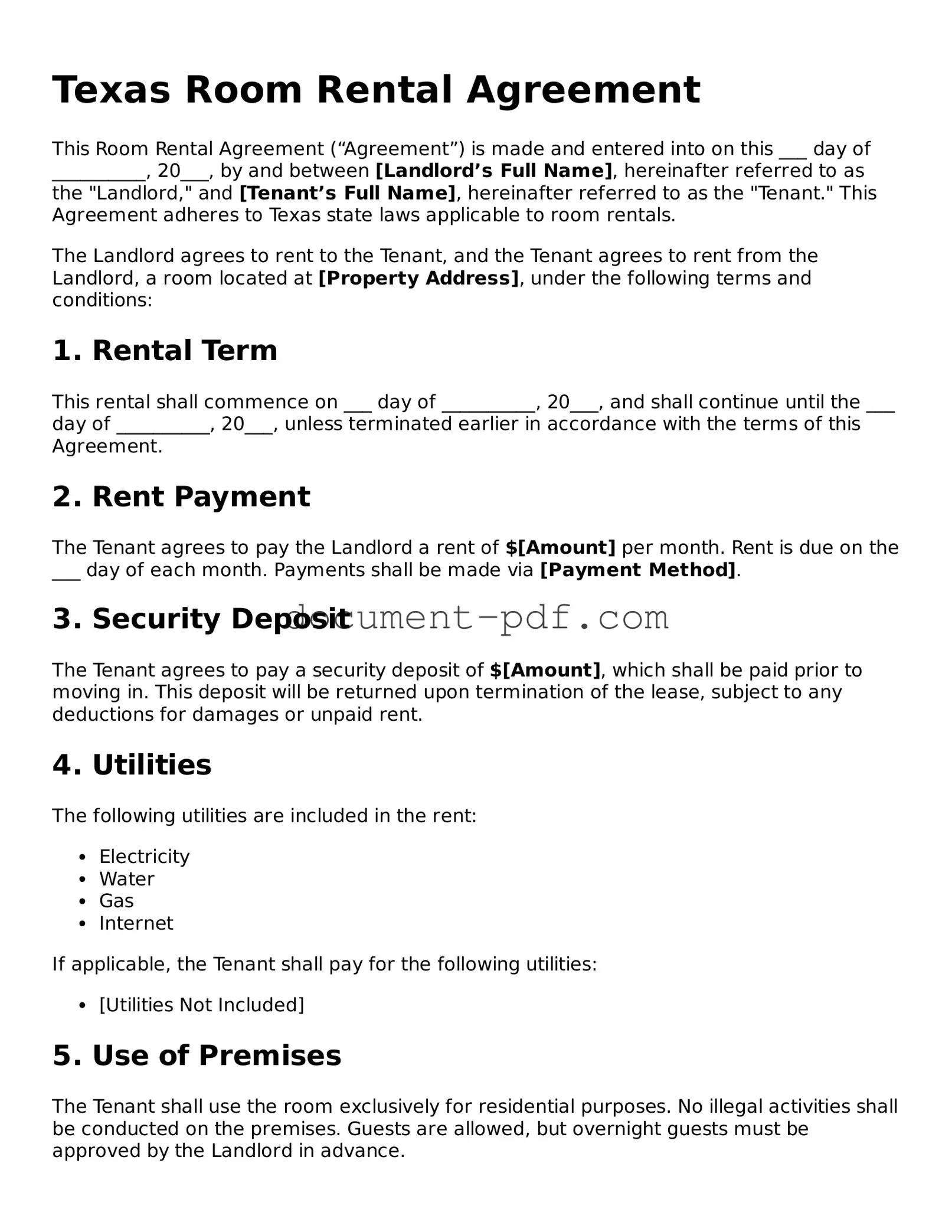Texas Room Rental Agreement
This Room Rental Agreement (“Agreement”) is made and entered into on this ___ day of __________, 20___, by and between [Landlord’s Full Name], hereinafter referred to as the "Landlord," and [Tenant’s Full Name], hereinafter referred to as the "Tenant." This Agreement adheres to Texas state laws applicable to room rentals.
The Landlord agrees to rent to the Tenant, and the Tenant agrees to rent from the Landlord, a room located at [Property Address], under the following terms and conditions:
1. Rental Term
This rental shall commence on ___ day of __________, 20___, and shall continue until the ___ day of __________, 20___, unless terminated earlier in accordance with the terms of this Agreement.
2. Rent Payment
The Tenant agrees to pay the Landlord a rent of $[Amount] per month. Rent is due on the ___ day of each month. Payments shall be made via [Payment Method].
3. Security Deposit
The Tenant agrees to pay a security deposit of $[Amount], which shall be paid prior to moving in. This deposit will be returned upon termination of the lease, subject to any deductions for damages or unpaid rent.
4. Utilities
The following utilities are included in the rent:
- Electricity
- Water
- Gas
- Internet
If applicable, the Tenant shall pay for the following utilities:
5. Use of Premises
The Tenant shall use the room exclusively for residential purposes. No illegal activities shall be conducted on the premises. Guests are allowed, but overnight guests must be approved by the Landlord in advance.
6. Maintenance and Repairs
The Landlord is responsible for maintaining the common areas of the property and ensuring that the premises remain habitable. The Tenant shall notify the Landlord of any repair needs promptly.
7. Termination
Either party may terminate this Agreement with written notice of ___ days prior to the desired termination date. The Tenant is required to return the room in the same condition as received, excluding normal wear and tear.
8. Governing Law
This Agreement shall be governed by the laws of the State of Texas.
9. Signatures
By signing below, both parties acknowledge that they have read and understood the terms of this Agreement, and agree to abide by its terms.
__________________________
Landlord’s Signature
Date: ___________________
__________________________
Tenant’s Signature
Date: ___________________
